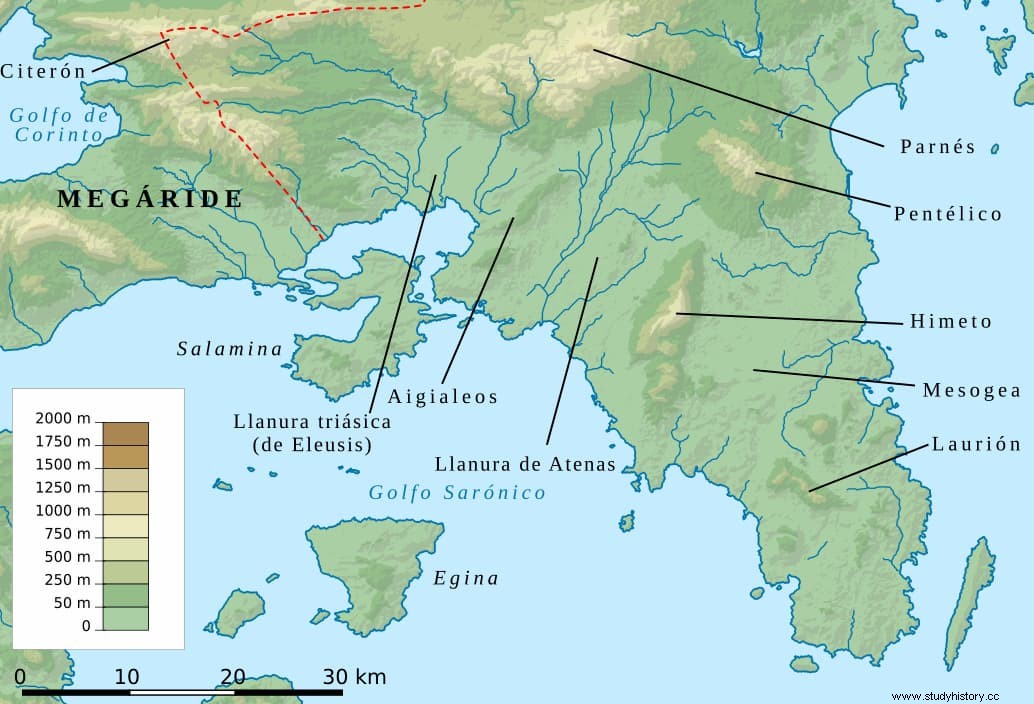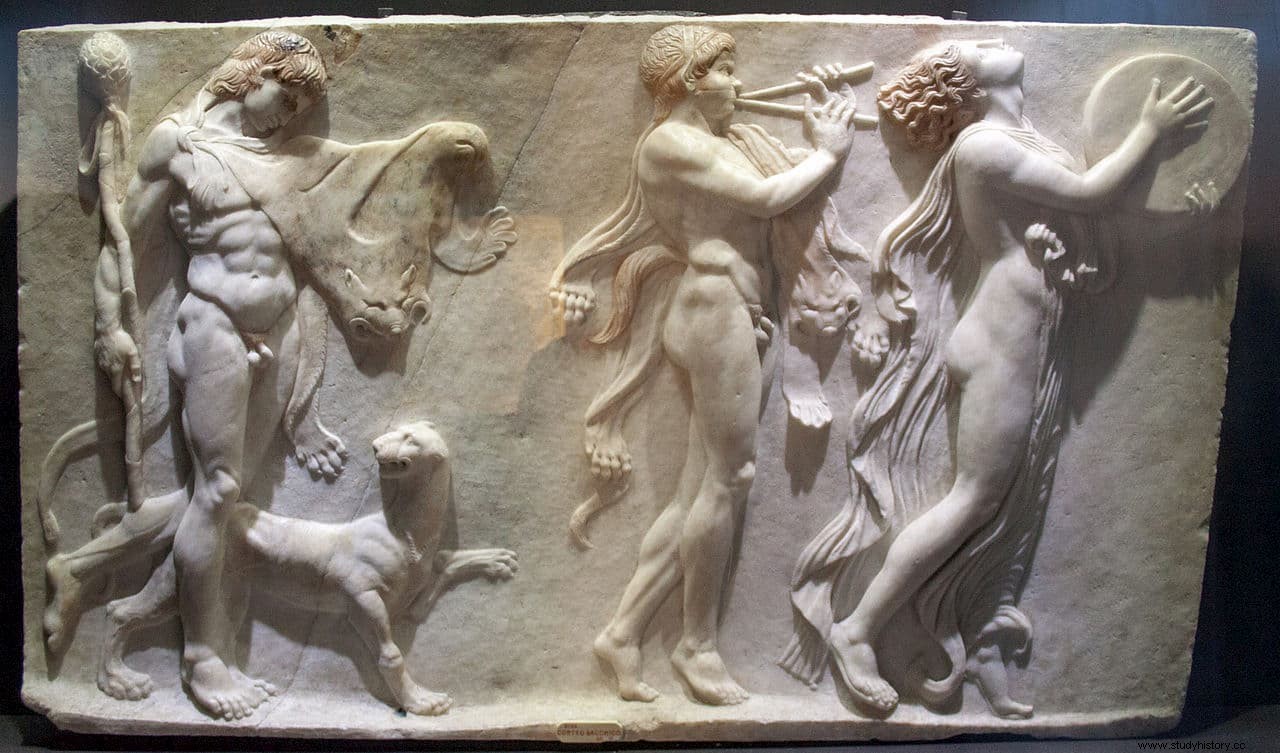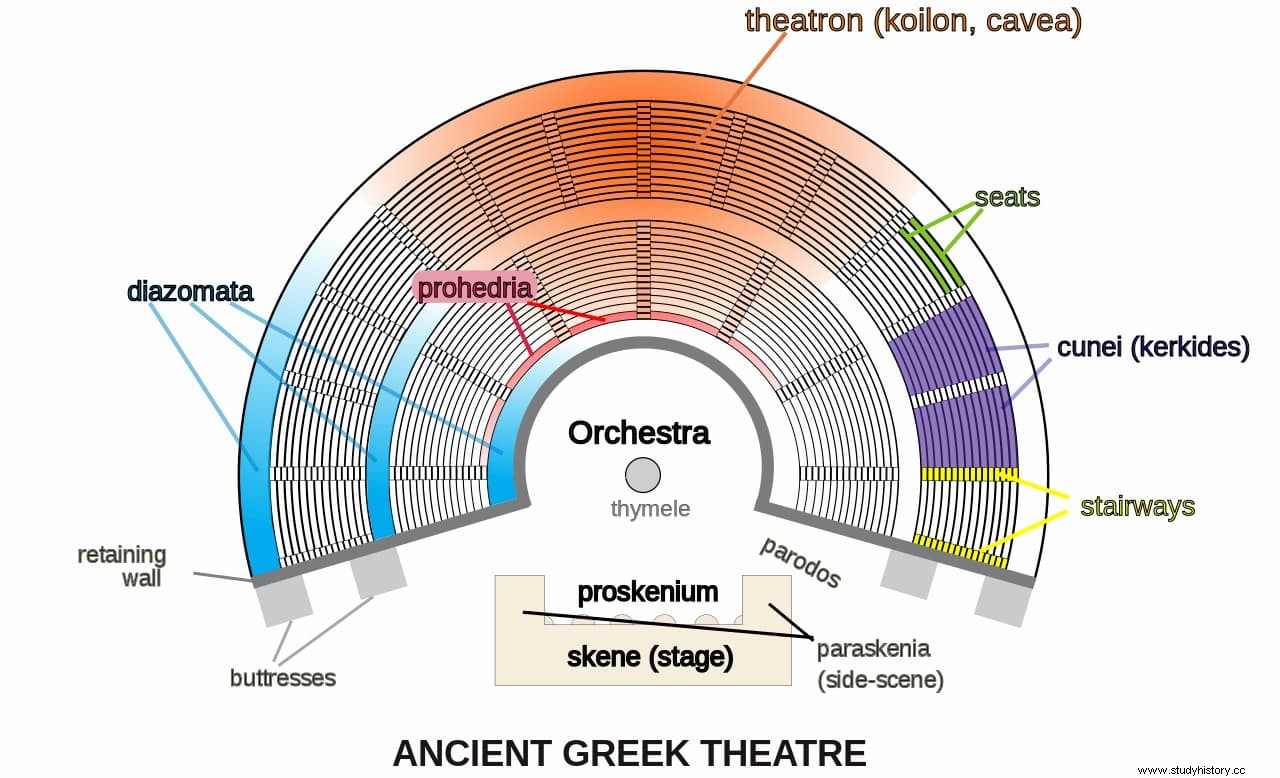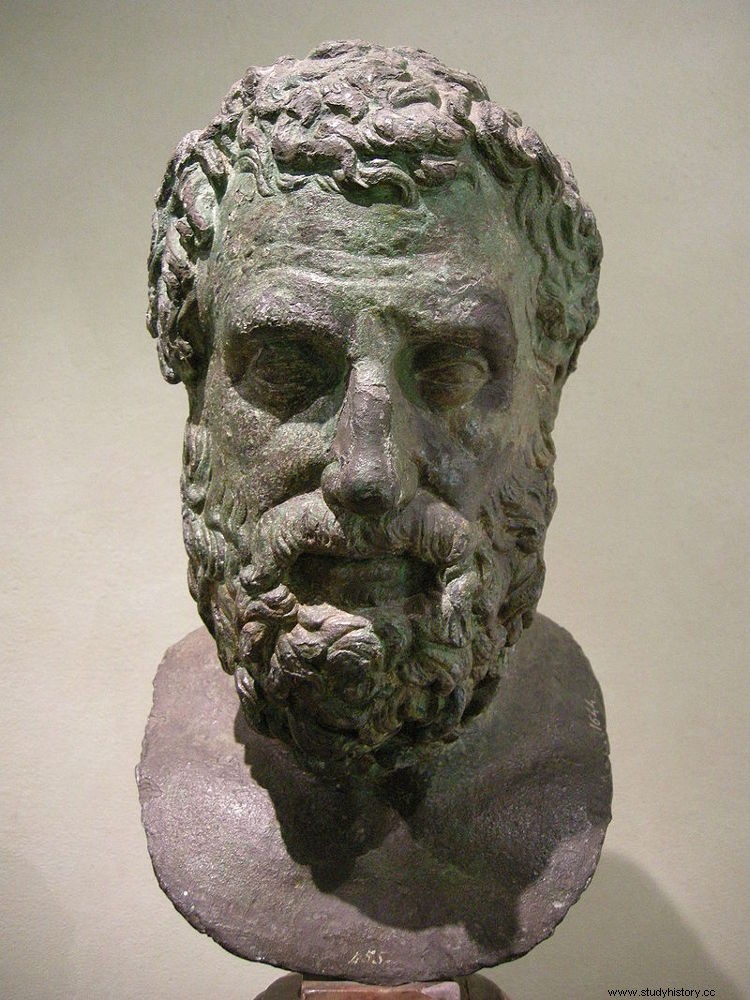In 1939, the National Theater of Greece, a project founded almost six decades earlier by King George I to provide the country with a permanent theater in Athens, diversified its offer by creating an itinerant company that would travel throughout the territory staging functions in each city. It was called Thespidos Weapon , i.e. The Thespis Wagon , in homage to the playwright of the 6th century B.C. who is considered the first known actor in history and inventor of theatrical tragedy.
Given the chronological distance, little data is known about Thespis's personal life, other than that he was born around the year 566 BC. in Icaria, the current Dionysos, a city located to the north of the Athenian outskirts, spread out between the slopes of Mount Pentelico (from which the famous homonymous marble was extracted) and the pass that separates it from Parnes, the natural border between the regions of Attica and Boeotia.
Historiographical sources are not abundant and these are sometimes merged with the legend, so it is difficult to separate the real from the imaginary, but some ancient texts and especially the Poetics of Aristotle identify him as a singer of dithyrambs who devised a new way of composing and interpreting them.

The dithyramb was a brief, satirical and improvised lyrical composition in honor of Dionysus, the god of fertility and wine (the same one that the Romans adapted as Bacchus), who had the power to free men from their normal state. to plunge them into ecstasy through music and alcohol, which is why he was nicknamed Eleuterio (Liberator).
It is not surprising, then, that he was considered the patron of agriculture (after all, the grapes with which the wines were made came from) and of the theater (in which the person came out of himself to adopt a role) . In fact, the dithyrambs were performed in a drunken state and were the basis of the Dionysian rites, constituting a literary genre written since the 7th century BC, by the poet Arion of Lesbos, a character halfway between reality and myth. .
If the dithyramb was an ode to Dionysus, it follows that the city that bore his name could be considered the capital of reference for its public presentation, especially during the celebration of the Dionysias that took place throughout the Attica region. They were divided into Rural Dionisias and Urban Dionisias, the latter also known as Great Dionisias, which took place in the month of Elafebolion (March). They were instituted -or expanded- in the year 534 BC. by Peisistratus, who imported them to Athens from Eleutheras (a town located on the border with Boeotia). The statue of the god was placed in a temple ad hoc built right in front of the theater that bore his name.

The part of the feasts that is of interest here consisted of a literary contest in which the works had to gloss the life of that divinity. In that original festival of 534 B.C. Thespis was erected as the winner, by introducing that new style that we said before. The normal thing then was that the author himself recited his dithyramb; the novelty this time was that Thespis assumed a role instead of representing himself. That is, he created a hypocritès (character) who was fully integrated into the plot by interacting with the chorus. This was the leader of the choir, which was made up of a group of young people in charge of singing and dancing, as the satyrs would do, first during the procession to the Temple of Dionysus that was organized at the harvest festival and later around the sacrificial altar.
Thespis turned the chorus, originally a simple director or voice-guide, into a character who dialogued with the narrator in the proskenion (the part of the stage that is most visible to the public because it is raised), thus incorporating the choir into the theatre; for this she placed him in the orchestra but moving around the protagonists, so that the dramatization also appeared. The chorus, which could be male (a citizen who pretended to be a barbarian) or female (although played by a man), wore a mask, like his interlocutor, and encouraged the interventions of the choir (which came to be a representation of the people) exhorting him, asking him questions, etc.
Furthermore, as we have seen, Thespis expressively reinforced the different characters by masking them. It seems that at first it would be with simple makeup made with natural pigments, whether they were vegetables such as purslane (a common plant in southern Europe), and minerals such as white lead (lead carbonate), to later become authentic masks of linen, the same ones that characterized the typical Greek theater and today symbolize the performing arts, with their contrasting gestures of joy and sadness. Likewise, he provided the actors with specific costumes that facilitated their identification.

In other words, Thespis radically changed the dithyrambs, transforming them into tragedies:dialogue works, just as they would become popular in the Classical Period and whose etymology is uncertain, perhaps allusive to the goat that was sacrificed to Dionysus, to the same animal that began to be given as gifts. to the winner of the contests or to the fake voices that the actors would assume (which originally, let us remember, were identified with satyrs, half human, half goat). That visionary considered that the performances had become boring and repetitive, hence the adoption of the colloquial format in which, in addition, the choir intervened from time to time, underlining the scene with interjections, exclamations, comments, etc.
Twenty years later, Aeschylus would go a step further by adding to the deuteragōnistḗs (deuteragonist or second actor) and after half a century it would be Sophocles who would do the same with the tritagōnistḗs (tritagonist or third actor). Earlier, Thespis also introduced a livelier rhythm, livening up the dialogues through the trochaîos (trocheo), a metrical foot in which there was a first long syllable (accented) and a second short (unaccented) -remember that they were sung works-, with which he favored the insertion of complementary dance pieces, to which he endowed of greater expressiveness. The philosopher Themistius also credited him with the invention of the prologue.

If it is true that Thespis composed the first tragedy, as tradition dictates, that seminal and therefore somewhat archaic work - the choir would still be made up of satyrs - would be the one that won the festival contest organized by Pisistratus. Unfortunately it has been lost, like the rest of his compositions. We only know the titles of four of them and some fragments that experts today consider forgeries perpetrated by various hands; Diogenes Laertius specifically accuses Heraclides Ponticus, a Pythagorean disciple of Aristotle and Democritus who stood out as an astronomer (he is supposed to be the first to propose heliocentrism and the rotation of the Earth on its axis), but some writers also appear in the spotlight later Christians.
The four titles mentioned are:Athla Péliou è Phorbas (Games in honor of Pelías and Forbante , about the monarch of the Perseus myth), Hiereis (Priests; its argument is ignored), Èitheoi (Boys , referring to the young men sent to Crete to feed the minotaur that Theseus later killed) and Penteus (name of the king of Thebes butchered by the maenads -a kind of wild concubines of Dionysus- after refusing to establish the cult of that god). From Penteus one verse is preserved by indirect sources, although, as already noted, it is probably apocryphal.
Speaking of verses, we commented before that the metric used was trochaic. However, a student of Thespis called Phrynicus introduced a variant, the iambic, which owes its name to the use of the iambus:a verse composed of a short and a long syllable, thus being the reverse of the trocheo; Phrynicus mainly used the tetrapodia , a tetrameter iambus (of four feet). There is more information about him than about his teacher and although he was somewhat obscured by the shadow of his contemporary Aeschylus, he is considered the creator of historical tragedy, that is, one that had an argument based on real events. That is why he is nicknamed the Tragic .
Phrynicus won his first lyrical competition in 510 BC. Now, his masterpiece was The Taking of Miletus , which he introduced in 494 B.C. and had a huge impact in several ways. On the one hand, he included for the first time a female character (although, we insist, played by a man), with what this implied in nuances and feelings never touched; on the other, he fined its author a thousand drachmas for having reminded the Greeks of an unfortunate episode (the loss of Miletus at the hands of the Persians in the Persian Wars); according to Herodotus, it was prohibited.

But, at the same time, he was so successful that his next play was also a historical tragedy. The Phoenician , which was somewhat of a sequel because it was about the Battle of Salamis, won the prize in the 476 BC contest. and served as inspiration to Aeschylus for his work The Persians , which imitated the beginning, and to bring its own novelty:the trilogies. Other Phrynicus compositions were Acteon , Alcestis, Altea or The Women of Pleuron , Antheus or The Libyans , The Danaides ,The Egyptians and Tantalum . Unfortunately, as in the case of Thespis, none have survived.
In short, returning to Thespis, he can still be reminded of one more contribution to the history of the theater:tours. After confronting the famous legislator Solon, he was banished from Athens and, making a virtue of necessity, he loaded all the accessories he used in performances (costumes, masks, etc.) into a cart to tour Greece, accompanied by several collaborators. As if it were a traveling company, he organized functions in each town where he stopped, using the vehicle itself as a stage. From this derives a current expression that exists in many countries, "riding on the chariot of Thespis" , to refer to the vocation of actor, like the word thespian is applied in English to refer to that trade.
